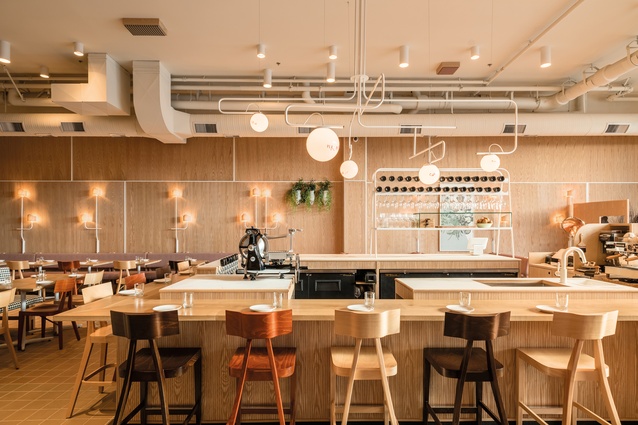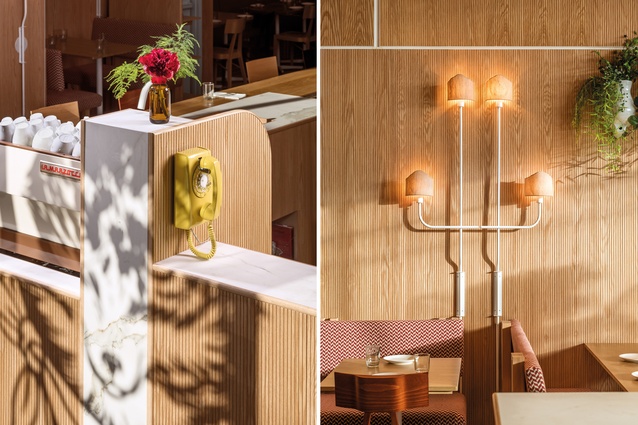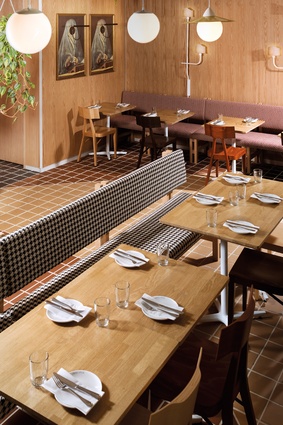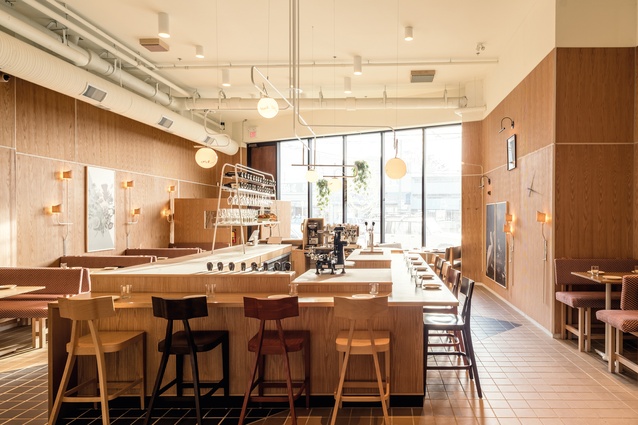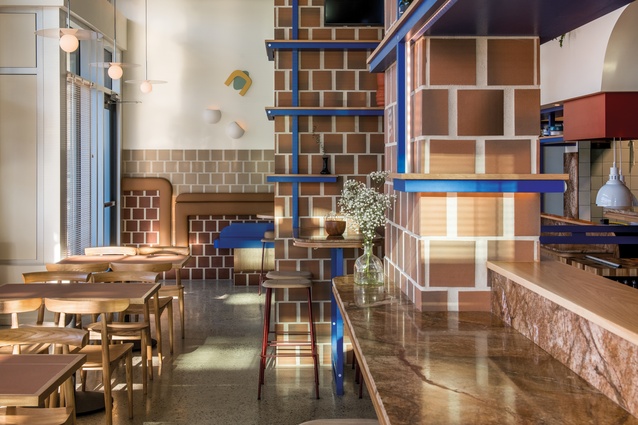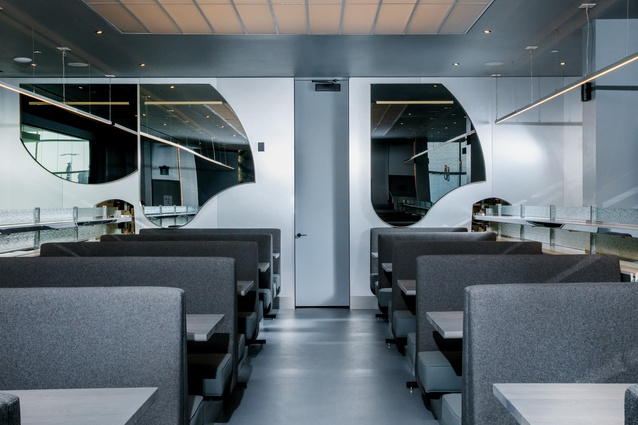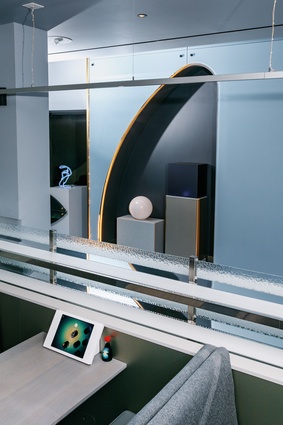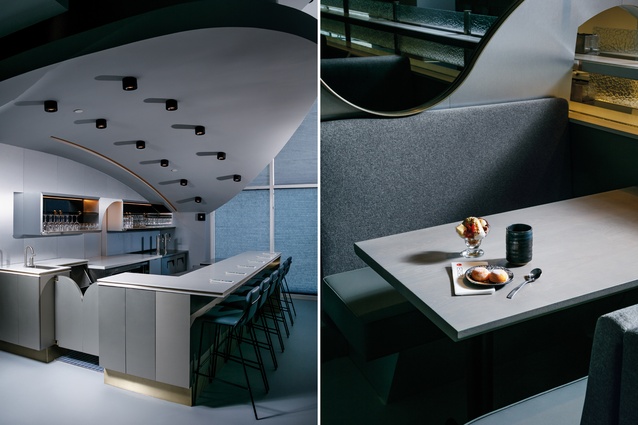Stage directions: Ste. Marie
Theatre, the fine arts and a high level of empathy are at the core of Ste. Marie, a Vancouver design practice re-imagining North American commercial interiors.
Theatre and hospitality are inherently intertwined. An impeccable dining experience is comparable to a flawless performance – the food, wine and waiters unite to form a seamless show. So, when Wes Anderson ventured into interiors by designing Bar Luce at the Fondazione Prada museum in Milan, the progression felt natural (if a little quirky; we are talking about Wes Anderson after all).
The same can be said for Craig Stanghetta. Studio principal of Ste. Marie in Vancouver, Canada, the self-trained designer has a Bachelor of Fine Arts, majoring in theatre. After acting on stage in Toronto, he transitioned into film and television in Vancouver. “I’d waited for so long to make money as an actor that, when it finally happened, I was terrified that I wasn’t enjoying it,” he says. “But I was lucky, too. I’d been designing on the side as a serious hobby and had experience in hospitality. I was able to convince a few people to leave their interior projects in my hands.”
Stanghetta’s background in independent theatre meant he was constantly building. He often dabbled in furniture and small installation art, and helped friends bring retail projects to life. Beyond that, he didn’t train in design at all. “I grew up in a really small town [Sault Ste. Marie, Ontario, for those wondering about the origin of the studio name], which wasn’t super-sophisticated in terms of architecture and design. I didn’t know you could even do what I’m doing today – there were no courses for commercial interior design.”
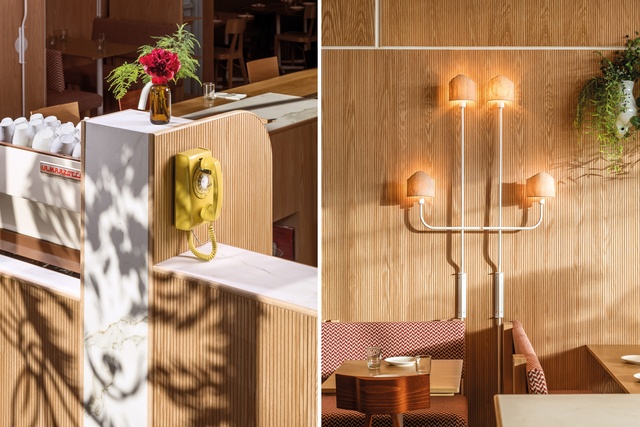
But Stanghetta’s hands-on approach to construction and craft led him to believe it wouldn’t be hard to put together a small hospitality project. “I figured it was all about communication. I started doing smaller things before taking on a few bigger restaurants. That’s when I had to learn really quickly.”
During the first four to five years in business, after launching in 2011, Stanghetta grew concerned he was in too deep. “Seven days a week, 16 hours a day: I was constantly working, constantly researching. I use the analogy of suddenly sinking your life savings into a money pit of a home whose foundations are failing. You’d go bankrupt if you didn’t solve the problem. You learn by necessity. I developed the spirit of being able to slowly unravel knots and see my way through. I try to keep that spirit intact in the studio today. Because I didn’t have a template for how to solve problems – or what a process should look like – I had to develop my own methodology.”
That methodology includes an obsession for details and a focus on storytelling, a remnant of his theatre days, but Stanghetta says it all begins with having a level of empathy for an interior. “We always ask ourselves: what does the project want to become?” The Ste. Marie team gathers and distils as many inputs as possible – from the client, the site, personal investigation, historical research and so on.
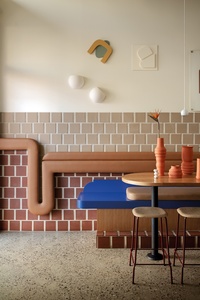
“Every site is unique. There are specific opportunities, obstacles and constraints. We listen to what the site has to say.” He mentions an upcoming project in an old logging and carpentry factory. Although it’s too soon to say much more, a clear historical narrative is naturally emerging. “As we follow that rabbit hole, a tonne of small cues arise that help us to tie everything to a certain direction.” It’s a long-winded process – “and, frankly, not terribly efficient” – but, once the group has developed a focused narrative, every decision flows through that filter.
Then, says Stanghetta, things are relatively simple. When it comes to materials, for instance, a mere few will suit the story and the environment. Volumes, formwork, furniture typologies, fixtures: only so many will feel right and even fewer will perform correctly. “You might end up with two options,” says the designer. “You’d think that might be frustrating but it’s actually liberating. You start to gain a sense that a project is unfolding on its own once you’ve cracked your way in.”
Since what Stanghetta calls “the old bootstrapping days” of the early 2010s – just him on the job, with perhaps the odd outsider involved – the scale of both the studio and its projects has swelled. Ste. Marie now works on large projects all over North America and employs around 10 core in-house designers, alongside a handful of staff members in other roles. “As we grow, we strive to keep a number of independent projects on the books but it’s not easy.” Stanghetta points to Bao Bei, his first restaurant design.
“It’s still one of my favourite spots. The nooks and crannies were given the same attention as was the big picture. That’s the challenge for us: how do we keep that level of design
and attention to detail as we upscale the business? How do we convince the clients of larger projects that there needs to be a macro perspective on narrative? When people use our spaces, we want them to feel an immediate emotional connection. We’re doing our job if we can make something memorable, something guests get excited about patronising.”
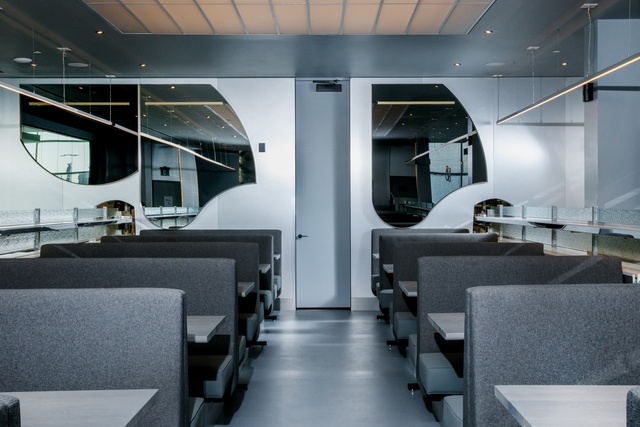
One of Stanghetta’s easiest clients to persuade is himself; he co-owns three F&B locations in Vancouver. “They obviously end up being great testing grounds for trying out new things and they help to keep us disciplined. We’re very much engaged in how they perform from a business standpoint.”
Currently, the studio’s job sheet includes assignments in the hotel, mixed-use and multi-residential sectors. “We always assess how amenity spaces in buildings connect to other spaces, such as retail. How can you leverage the way that people gather to add value to an interior? This is a big shift for us, to use that kind of thinking in co-working spaces, offices and lobbies of condos or hotels.
“The silo approach has been bulldozed by the likes of WeWork, which is introducing a different paradigm in work life. Today’s working generation doesn’t spend as much time at home, meaning public space is changing so much. We’re laying down roots in this arena but all through the Ste. Marie lens. Hospitality is at the core of everything we do.”
This article first appeared in Interior magazine.


